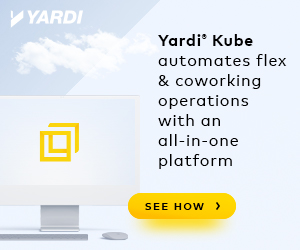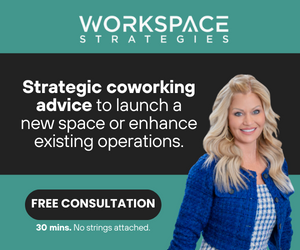- The global population is aging faster than ever before. By 2050, the World Health Organization predicts that 22% of the global population will be aged over 60.
- The opinions of older demographics are often missing from the discussion on workplace preferences. Last year, Savills released a report on generational workplace preferences that covered four different generations.
- Workspaces that embrace age diversity, have accessible spaces, and support employee well-being are more likely to succeed.
The global population is aging faster than ever before. By 2050, the World Health Organization predicts that 22% of the global population will be aged over 60. To attract and retain talent, companies will need to design inclusive workspaces that empower an older demographic.
Many companies aren’t sure how to design their office spaces to accommodate multiple generations. Last summer, Savills released a useful report after studying the generational workplace preferences of 943 workers across four generations.
It states: “Workplaces thrive on the skills, wisdom, and talent of people across a range of ages. We believe companies that set aside assumptions and consider generational preferences, diverse, or homogenous, will build stronger, more agile, and durable workplace strategies.”
A typical workforce has up to five generations. Different generations have different needs, but the opinions of older demographics are often missing from discussions on workplace preferences.
Baby boomers require access to other amenities
Baby Boomers (born between 1946-1964) have expressed a need for their office to be located near food and beverage providers, and with good links to public transport. Alongside having an office in a central location that’s close to lunch and coffee spots, the workspace itself could include a communal eating area and kitchen for cooking fresh food to cater to food preferences and budgets across an intergenerational workforce.
Having an office with close links to public transport empowers people to continue getting to and from the office as they age. Giving people the option to hop on a bus or train to commute does not exclude an individual from accessing the workplace when their mobility begins to deteriorate.
Accessibility is a priority in the workplace
One of the most important things to take into account in terms of workspace design is accessibility. Menopause consultant Kate Usher described the topic of accessibility in the workplace as: “It’s whether you feel that you can get through the front door…It’s about whether you face hurdles before you get to the desk.”
An individual who cannot enter a workspace with ease will simply not return to the office. For companies, this might have devastating consequences. Accessible workspaces must also have step-free access, fixtures, and fittings located lower down a wall, and the option of an elevator for wheelchair users.
Provide ergonomic furniture
Baby Boomers spend 47% of their working day doing focus work — comprising long periods of distraction-free time for working on high-level tasks. Focus work should take place in a suitable working environment that’s semi-private or concealed from noise and distractions, and offers ergonomic furniture for optimum comfort over extended periods.
Coworking thought leader Helga Moreno advises that companies and operators who invest in high-quality comfortable furniture look after workers’ posture and mitigate the risk of injury. Think about it this way: having bar stools may fit a design aesthetic, but it isn’t practical. Workers also require a desk that’s at the right height in relation to chair height, and options for standing up — standing desks are now all the rage for good reason. Providing larger screens is also strongly advised, considering eyesight typically deteriorates as people age.
Zone the workspace for different activities
Every individual has a different way of working. Older workers prefer to work by themselves, whilst younger workers enjoy collaboration and socialization with others. To cater to the needs of multiple generations, an employer can give everyone what they want and think of ways to tie it all together in one space.
Zoning is a spatial design concept that separates a space into several areas or zones to accommodate different activities. From providing focus workspaces, meeting rooms, collaboration spaces, eating spaces, and team bonding areas, to providing open, private, and semi-private zones, when providing an inclusive workspace, all needs must be considered.
Lots of light and outdoor space
Indoor plants are a common feature in today’s offices, however, this feature is only preferred by the millennial generation whilst all generations could get on board with having access to natural lighting. Ensuring that a workspace has ample natural light is a mood booster that contributes to improving people’s quality of life.
Not only that, but providing natural light also boosts workspace accessibility by supporting aging people whose health is beginning to decline. This includes people living with dementia. It’s predicted that by 2050, the number of dementia cases will triple from 57 million people in 2019 to 153 million. The global aging population is one of the major driving factors contributing to the increase of people living with dementia.
In the early stages of the illness, people with dementia can typically still continue to go about their day-to-day lives, but as their health worsens they become much more sensitive to light. They require much brighter and lighter environments than people who don’t have dementia. By doing this, it encourages an individual who has been diagnosed with dementia to continue working for as long as possible.
Empower an aging workforce
Designing an intergenerational workspace that empowers an older workforce must address the unique needs of an older workforce. It means companies can attract and retain older talent, and foster a diverse and productive workforce. As the global population continues to age, companies that embrace age diversity in workspace design and support employee well-being are more likely to succeed.

 Dr. Gleb Tsipursky – The Office Whisperer
Dr. Gleb Tsipursky – The Office Whisperer Cat Johnson – Coworking Marketing Maven
Cat Johnson – Coworking Marketing Maven Angela Howard – Culture Expert
Angela Howard – Culture Expert Drew Jones – Design & Innovation
Drew Jones – Design & Innovation Andrea Pirrotti-Dranchak – Competitive Advantage
Andrea Pirrotti-Dranchak – Competitive Advantage Jonathan Price – CRE & Flex Expert
Jonathan Price – CRE & Flex Expert Jeremy Fennema – Tech Innovation Alchemist
Jeremy Fennema – Tech Innovation Alchemist







